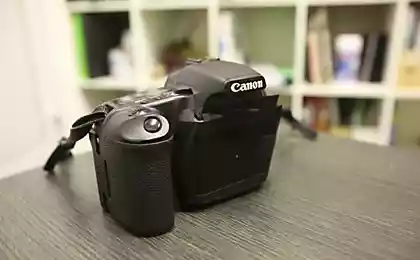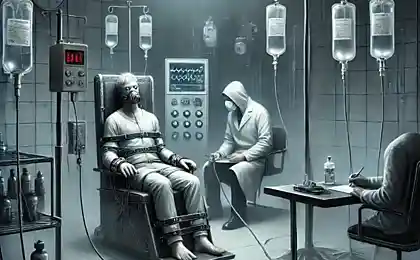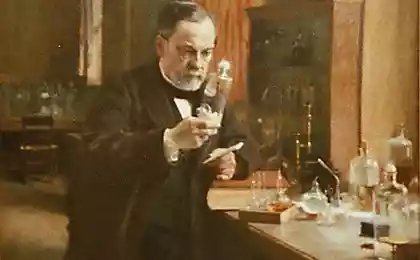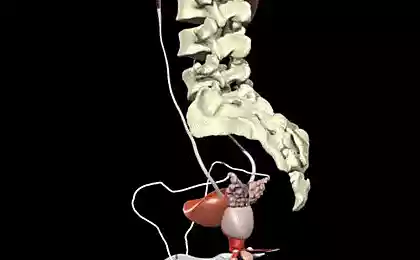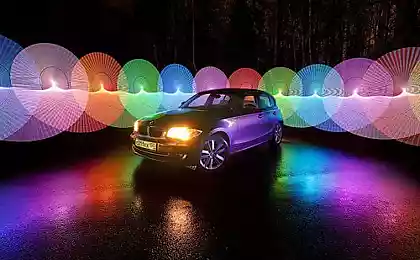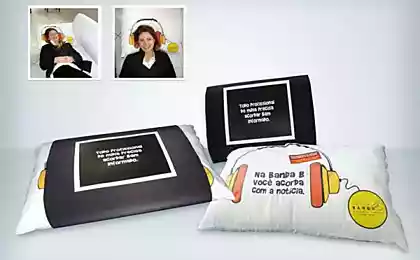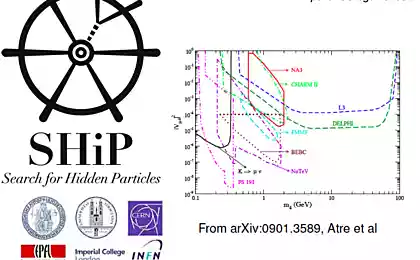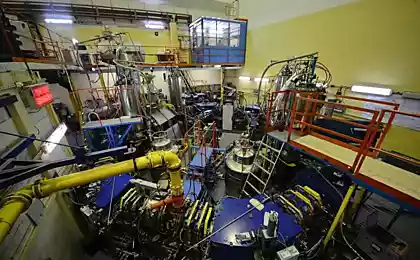749
Fotofokus: Experiments with the diaphragm
We will experiment with the diaphragm. If you change the shape of the aperture, you can get a very interesting effect. At home, the "new diaphragm" can be cut out of cardboard, and it is better to draw a marker on the protective filter lens (just make sure the marker is easily erased from the filter). There are also special lenses in which the aperture shifts. For example, there are special braces Lensbaby aperture.
We need maximum aperture lens with a focal length of 50 mm. With wide-angle lenses focus will not pass. It is best suited aperture lenses with a fixed focal length of 50 mm, so-called "a portrait».
5 demonstration Photo by Ilya Varlamov
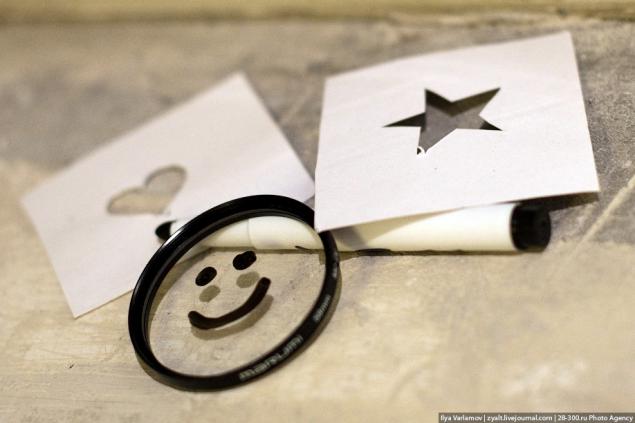
Terminology:
Aperture - the device camera lens, allows you to adjust the aperture ratio, that is, to change the lens aperture ratio - the ratio of the brightness of the optical image of the photographed object to the brightness of the object itself, as well as to establish the desired depth of field. Typically it consists of several (3 to 20) rotary crescent petals driven ring on the lens barrel, or (in most modern lenses) electrically controlled camera. At full aperture the petals form a round hole in the partially closed - a figure close to the polygon. This "polygon" affects the form m. N. "Bokeh" in the part of the highlights do not fall into the depth of field of point light sources. It is believed that the more petals on the device aperture, the more "beautiful" turns "bokeh" other options "beautiful" does not affect the diaphragm unit.
Boke - (from the Japanese boke - "blur", "blurred") - a term that describes the artistic merits of the subjective image not be in focus in the picture. Many of the images blurred background photographer intentionally for visual separation for the subject. On bokeh effect form aperture. Features bokeh can be determined through the wheels of confusion. Out of focus, each point of light becomes a disc. With one lens this disc is illuminated uniformly, with another - brighter on the edges, with the third - in the center. Some lenses have the shape of a disc wheel, on the other oval or because the polygon.
So start the experiment. For maximum effect, we need to have been in the background as much as possible many disks blur. For this great Christmas tree with dozens of multi-colored lights, candles or night outside town.
For the experiment, I chose a flower on the window. Not the best example, but for the test suit. The experiment involved the lens Canon EF 50 mm 1.4. This is a snapshot without additional filters.
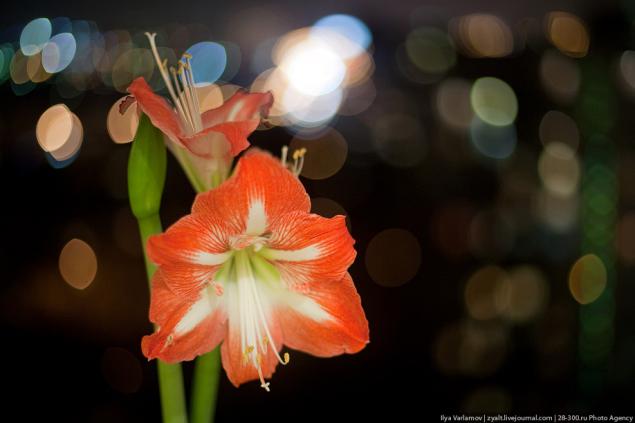
From paper-cut patch in the shape of heart and are putting it to the lens. A great way to surprise his girlfriend.
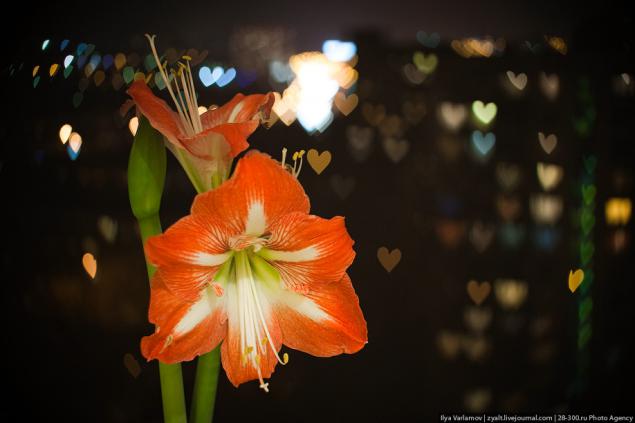
Instead of the heart can be any shape, such as an asterisk.
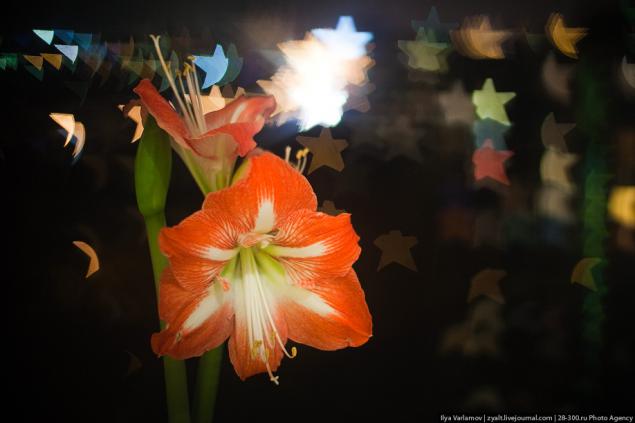
The second way is to take a marker (which draws on the board, it is easy to wash), and to draw on the protective filter pattern. In my case it is a smiley face. You can paint all the black filter, and then draw on it with a cotton swab, you can achieve very interesting effects.
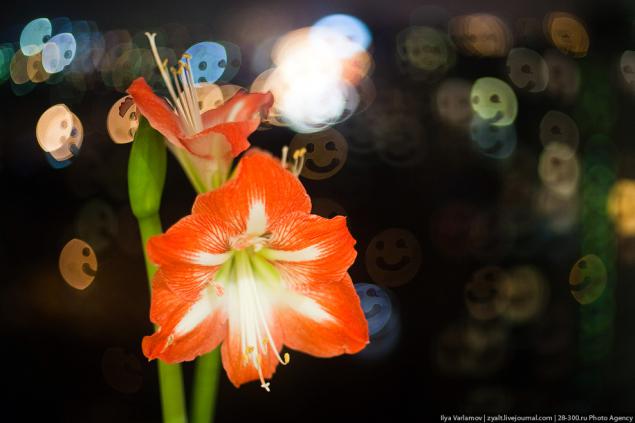
Source:
We need maximum aperture lens with a focal length of 50 mm. With wide-angle lenses focus will not pass. It is best suited aperture lenses with a fixed focal length of 50 mm, so-called "a portrait».
5 demonstration Photo by Ilya Varlamov

Terminology:
Aperture - the device camera lens, allows you to adjust the aperture ratio, that is, to change the lens aperture ratio - the ratio of the brightness of the optical image of the photographed object to the brightness of the object itself, as well as to establish the desired depth of field. Typically it consists of several (3 to 20) rotary crescent petals driven ring on the lens barrel, or (in most modern lenses) electrically controlled camera. At full aperture the petals form a round hole in the partially closed - a figure close to the polygon. This "polygon" affects the form m. N. "Bokeh" in the part of the highlights do not fall into the depth of field of point light sources. It is believed that the more petals on the device aperture, the more "beautiful" turns "bokeh" other options "beautiful" does not affect the diaphragm unit.
Boke - (from the Japanese boke - "blur", "blurred") - a term that describes the artistic merits of the subjective image not be in focus in the picture. Many of the images blurred background photographer intentionally for visual separation for the subject. On bokeh effect form aperture. Features bokeh can be determined through the wheels of confusion. Out of focus, each point of light becomes a disc. With one lens this disc is illuminated uniformly, with another - brighter on the edges, with the third - in the center. Some lenses have the shape of a disc wheel, on the other oval or because the polygon.
So start the experiment. For maximum effect, we need to have been in the background as much as possible many disks blur. For this great Christmas tree with dozens of multi-colored lights, candles or night outside town.
For the experiment, I chose a flower on the window. Not the best example, but for the test suit. The experiment involved the lens Canon EF 50 mm 1.4. This is a snapshot without additional filters.

From paper-cut patch in the shape of heart and are putting it to the lens. A great way to surprise his girlfriend.

Instead of the heart can be any shape, such as an asterisk.

The second way is to take a marker (which draws on the board, it is easy to wash), and to draw on the protective filter pattern. In my case it is a smiley face. You can paint all the black filter, and then draw on it with a cotton swab, you can achieve very interesting effects.

Source:

